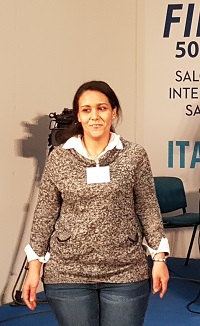Poultry Production in Tunisia
 Dabbou Sihem (Department of Veterinary Sciences, University of Turin)
Dabbou Sihem (Department of Veterinary Sciences, University of Turin)
Scarica la presentazione - Download the Powerpoint presentation
Abstract:
Poultry production is an important and vital agriculture sector of agriculture in Tunisia, which experienced the fastest growth and development in Tunisian livestock. In the last forty years, the poultry production has gone through great changes for intensive system. The economic boom in this industry encouraged the government to give technical support in poultry breeding especially, the importation of genetically superior breeds since middle of 1980s.
This sector ensures 59% of total meat production and contributes for about 12% of the agricultural Tunisian products, and for 33% of Tunisian value of livestock production. The poultry meat production is concentrated in coastline, then Northern and Western regions. During 2016, broiler production reached 127 thousand tons. The egg industry has covered all consumer demand since 1984, without any importation. The total egg production varied between 1.44 and 1.55 billion units in the last 5 years. The recent statistics showed that around 2 billion egg units were produced under intensive system, while 117 million units were produced by rural egg production (93 vs 7%, respectively). On the other hand, turkey production in 2016 was around 67 thousand tons. Recent governmental statistics showed that the total hatcheries are 42: 36 for broilers, 4 for layer hens and 2 for turkeys. In addition, statistics recorded that the total numbers of broiler, laying hens and turkey farms were 5583, 850 and 440, respectively. The number of slaughterhouses is 32 (23 actives and 9 approved) with 47 refrigerated rooms and 86 freezers. Tunisian poultry sector is organized by the Tunisian Poultry and Rabbit Association (GIPAC) and different mutual society of agricultural companies. Although the excellent enhancement in infrastructure reflected increasing the total production, poultry production faced some problems such as the granting of licenses and the overproduction which is insupportable by the local market. Many strategies were taken in place for solving current problems with the adoption of a new system of quotas (authorization in the import of the breeds based on the technical opinion of the Ministry of Agriculture). In addition, fixation of the production level of chicken according to the needs of local market, ensuring the supervision of farmers and the implementation of new technology and programs to update the sector.





